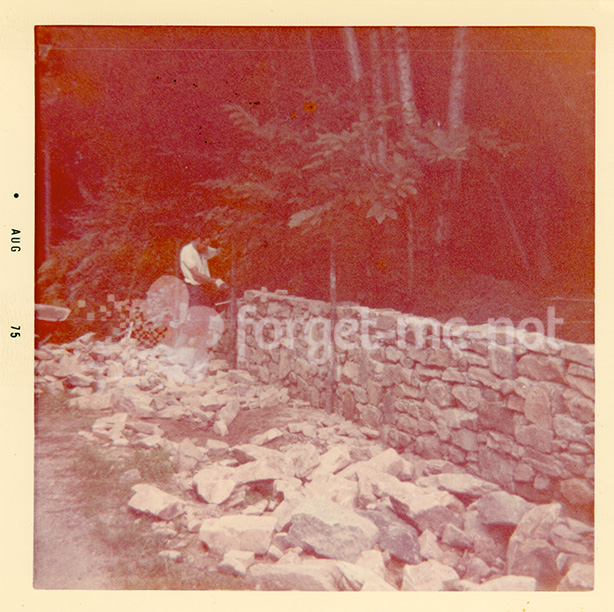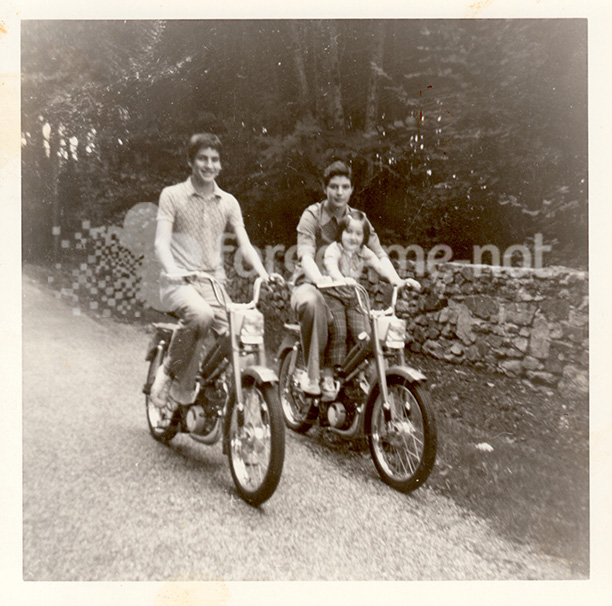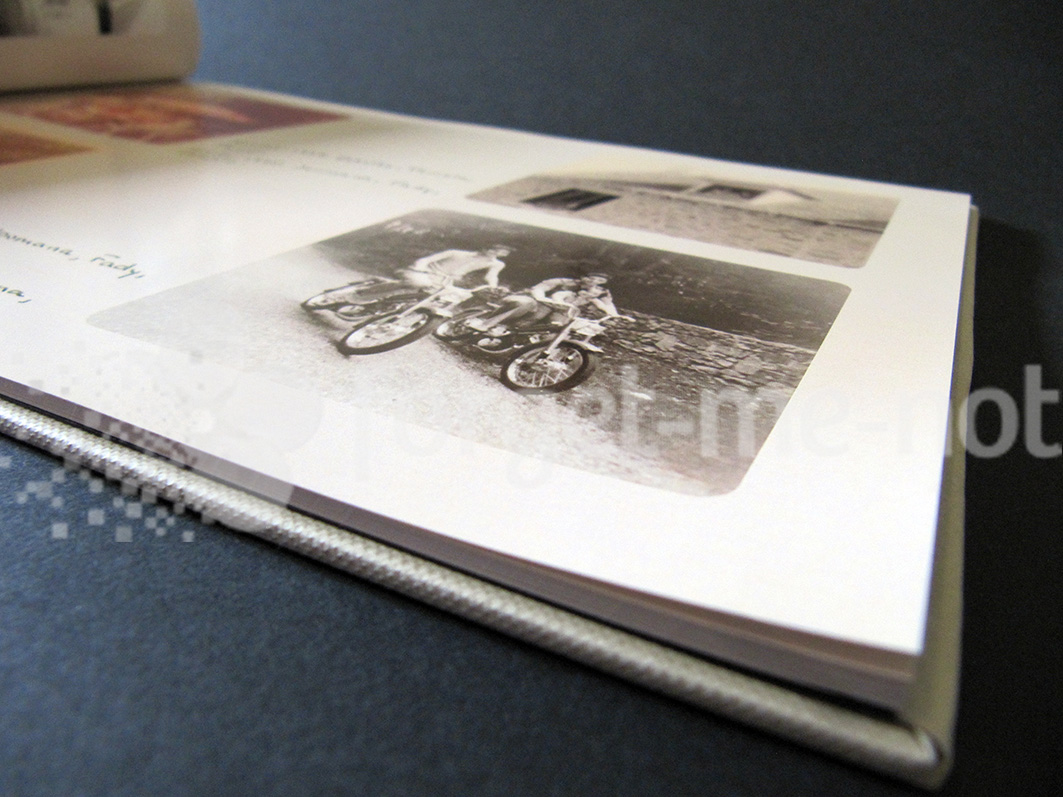This is the story of our countryside house in Limousin region – France. A small barn that my parents converted into a vacation home; a home away from home filled with memories of carefree summer days; a happy place, a little piece of paradise, just like Line Renaud’s cabin in Canada, a place where we always return.
“Ma cabane au Canada
C'est le seul bonheur pour moi
La vie libre qui me plait
La forêt
Si le sort m'enchaîne ailleurs
Toujours l'élan de mon cœur
Reviendra vers ma cabane au Canada”
Line Renaud
“Ma cabane au Canada
C'est le seul bonheur pour moi
La vie libre qui me plait
La forêt
Si le sort m'enchaîne ailleurs
Toujours l'élan de mon cœur
Reviendra vers ma cabane au Canada”
Line Renaud
In 1968, my parents bought a barn and decided to convert it into our vacation home. Renovation works lasted 5 years and were being done by local construction workers under the supervision of our neighbor and friend. Every summer, my father contributed to the renovation: he built the surrounding wall, paved the house terrace, planted trees etc. My mother took great pleasure and care in furnishing the house with antique furniture and objects that she’d discover in flea markets.
I was born in 1973 and we spent our first summer in this house as a family in 1974. I took my first steps there and my first shoes are kept in a cupboard drawer as a souvenir of this great achievement.
My older brother and sister had nice orange Motobecanes that they rode around the countryside and to the nearby villages.
We spent 3 months each summer discovering the area. We frequently received friends and family from Beirut who spent their summers with us. My mother worked in the garden beautifying it with flowers, my father continuing his home improvement works and we kids playing, reading and helping out – year after year.
My love and fascination for tractors was born there. I first drove one at the age of 7.
Our lives are shaped by what we love and the places we grew up in. And those summers in this house highly contributed to the grownups we later became. Now 40 years later, we still cherish it for all the good memories and times we spent there as children and as a family.
As they say: “Charity begins at home” so when I set up forget-me-not, I started organizing my own photographs and narrating my own stories. I went hunting for all the photos that were taken during those summers. They were all kept in boxes in a cupboard in my parents’ house. I spread them out and started organizing them by dates and themes. I was so pleased to see that some were dated already and for others I put on my investigator hat and looked for hints in the photographs to be able to date and properly caption all of them.
As they say: “Charity begins at home” so when I set up forget-me-not, I started organizing my own photographs and narrating my own stories. I went hunting for all the photos that were taken during those summers. They were all kept in boxes in a cupboard in my parents’ house. I spread them out and started organizing them by dates and themes. I was so pleased to see that some were dated already and for others I put on my investigator hat and looked for hints in the photographs to be able to date and properly caption all of them.
My goal was to create a photo book that would tell the story of our summers there. I wanted to print several copies to gift to my brother and sister. I scanned the photos, then worked on designing the album. There is nothing more heartening than seeing the glow and emotion in the eyes of my brother and sister when they each received a copy of the book.
Now our best memories are within reach. They can be easily shared with our children. We only have to take out this photo book, sit together and start telling them the story.
Your photos have the power to strengthen your family’s story, traditions and values. We are a visual society and photos tell stories. We can see in our family photos how our ancestors lived, what values mattered and what life was like long before technological advances became an everyday happening.
The Association of Personal Photo Organizers reports in their Insiders Guide to Photo Organizing:
Studies show that photos have a positive impact on families by connecting generations and reinforcing positive values. In fact, many experts agree that photos have a significant impact on the emotional well being of children. Parenting and youth development expert, Doctor G (Deborah Gilboa, MD) says that “organizing and displaying photographs connects children to our families, our values and our life goals for them.”
Once your photos are organized, you can create projects with them that you will be able to share with your loved ones: Your wedding album, a photo book you made especially for your great uncle 90th birthday, your mother's birthday video, a collection of fine art prints with your ancestors' antique photo portraits. The possibilities are endless.
Your photos have the power to strengthen your family’s story, traditions and values. We are a visual society and photos tell stories. We can see in our family photos how our ancestors lived, what values mattered and what life was like long before technological advances became an everyday happening.
The Association of Personal Photo Organizers reports in their Insiders Guide to Photo Organizing:
Studies show that photos have a positive impact on families by connecting generations and reinforcing positive values. In fact, many experts agree that photos have a significant impact on the emotional well being of children. Parenting and youth development expert, Doctor G (Deborah Gilboa, MD) says that “organizing and displaying photographs connects children to our families, our values and our life goals for them.”
Once your photos are organized, you can create projects with them that you will be able to share with your loved ones: Your wedding album, a photo book you made especially for your great uncle 90th birthday, your mother's birthday video, a collection of fine art prints with your ancestors' antique photo portraits. The possibilities are endless.
My brother tells me that he looks at the photo book every Sunday and smiles. No other gift could have made an impact like the photo book of the house in Limousin.
In the end, we all become stories and memories that we leave behind. Photographs are our memory retrieval tool because they are evidence of the lives we’ve lived. They shape our experience of reality and allow us to chronicle the world and its diversity. They help us build memories and shape identities. In a study On Photography, Susan Sontag, cultural analyst, novelist and filmmaker, writes:
“Through photographs, each family constructs a portrait-chronicle of itself - a portable kit of images that bears witness to its connectedness.”
Take action today and start organizing your photographs with us.
In the end, we all become stories and memories that we leave behind. Photographs are our memory retrieval tool because they are evidence of the lives we’ve lived. They shape our experience of reality and allow us to chronicle the world and its diversity. They help us build memories and shape identities. In a study On Photography, Susan Sontag, cultural analyst, novelist and filmmaker, writes:
“Through photographs, each family constructs a portrait-chronicle of itself - a portable kit of images that bears witness to its connectedness.”
Take action today and start organizing your photographs with us.









 RSS Feed
RSS Feed